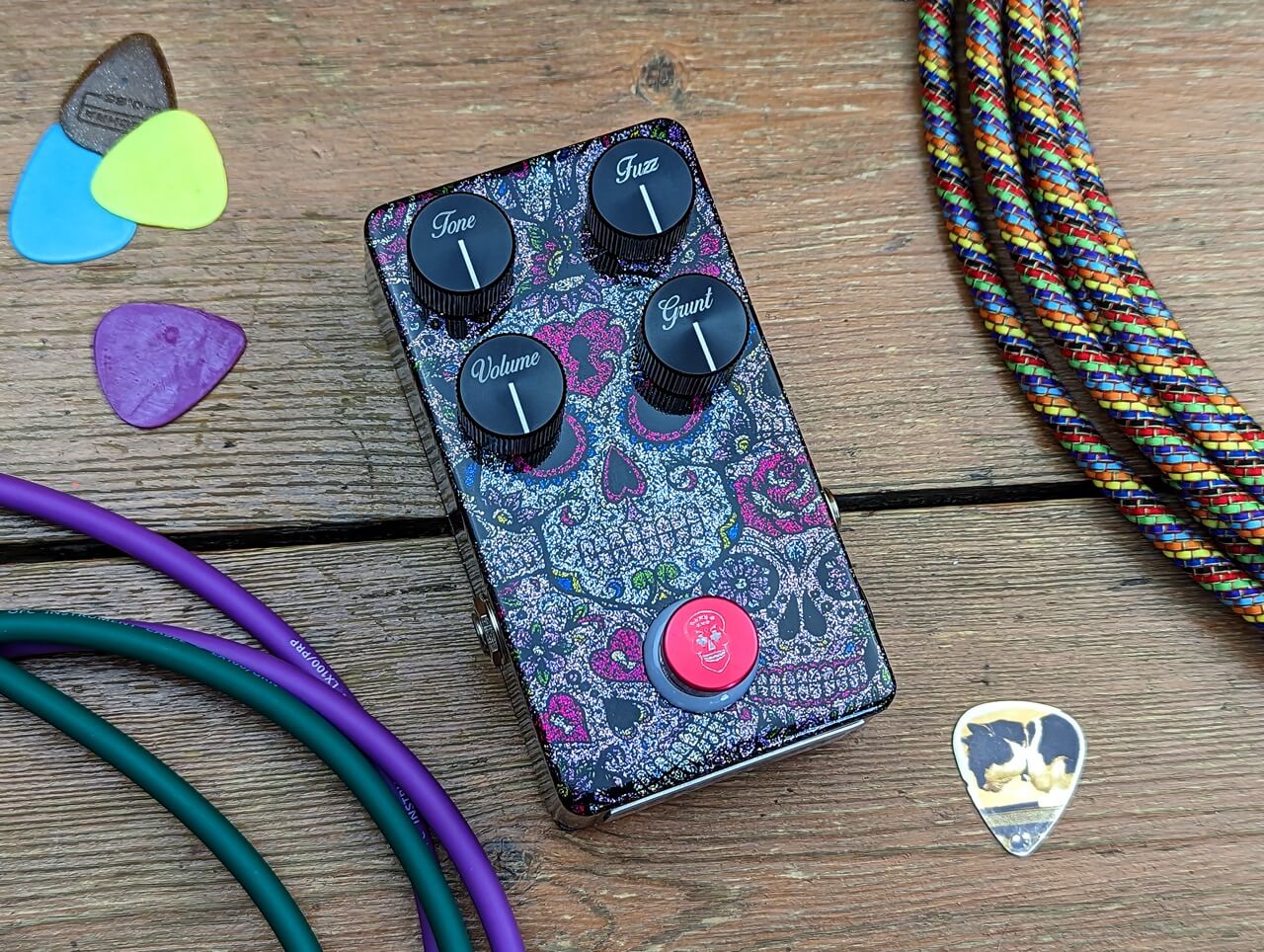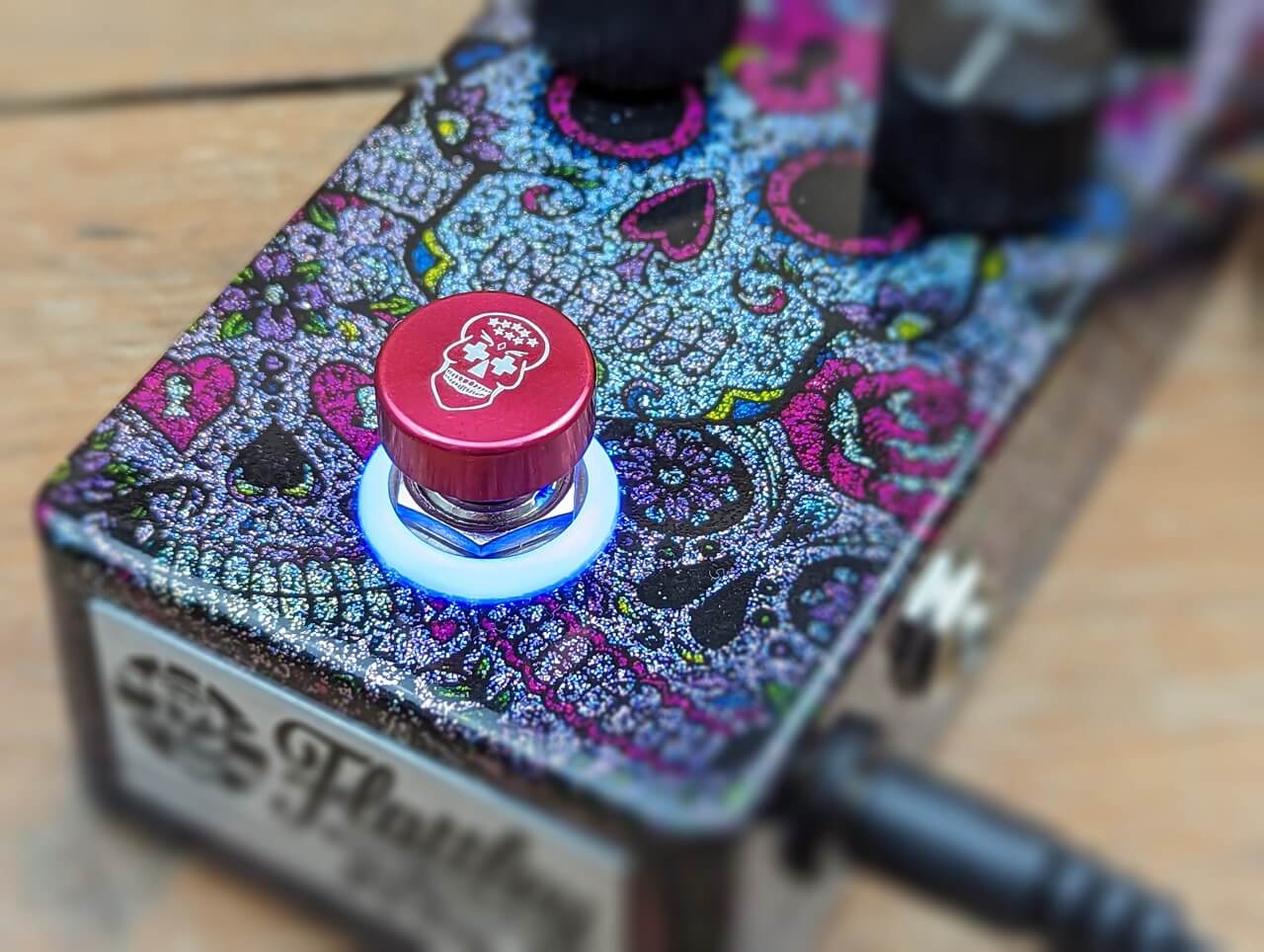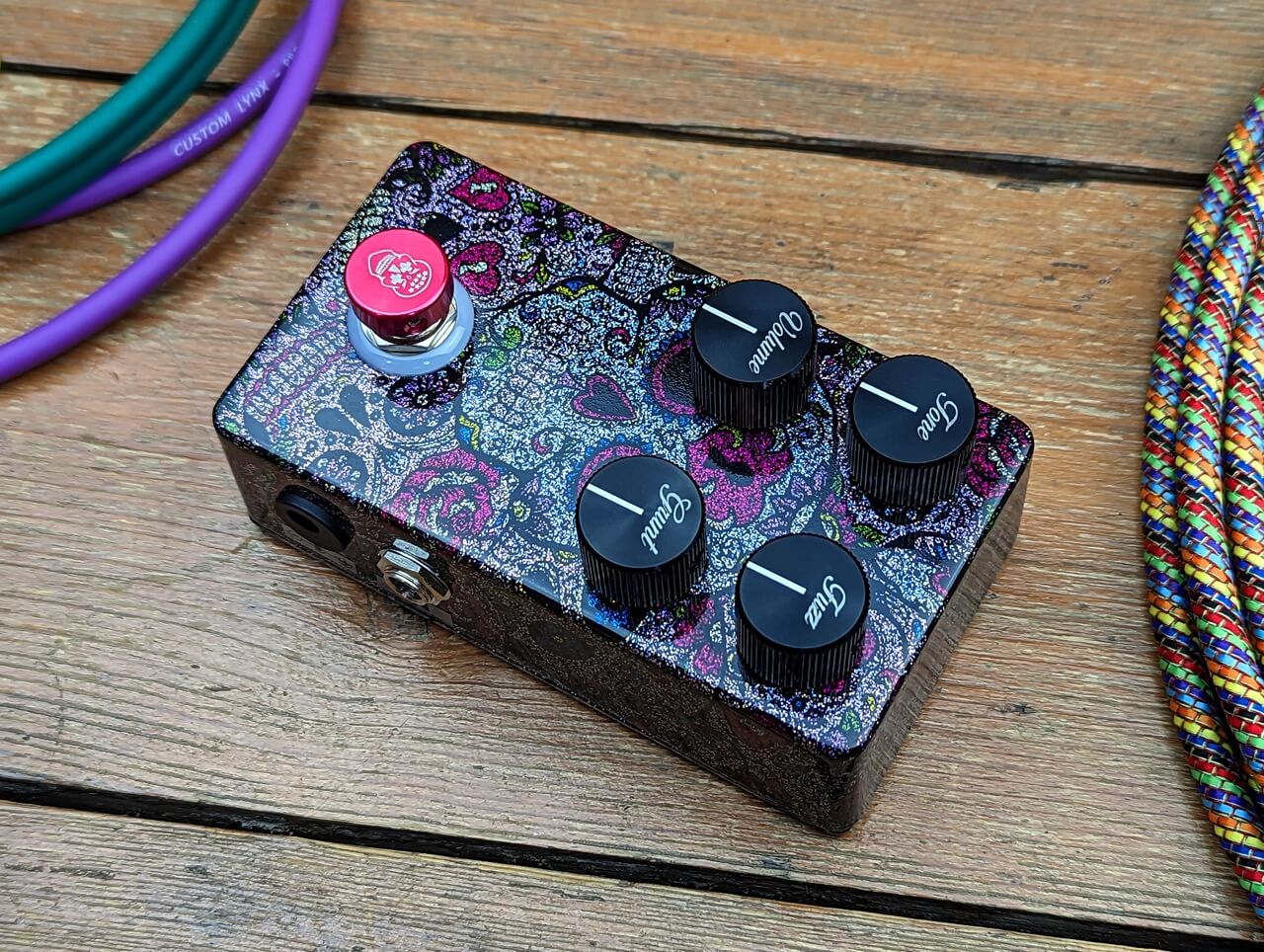Flattley DG Fuzz review: A top-quality noise machine that offers a different kind of control
Skulls on the outside, skills on the inside – Flattley’s all-round ingenuity ensures this four-knob fancy is no ordinary fuzz box.

Images: Richard Purvis/Guitar.com
Review Overview
Our rating
9
Our verdict
Here’s a question you’ve almost certainly never been asked the morning after going to a gig: “What did the guitarist’s pedals look like?” Because, really, who cares or even notices? Paul Flattley cares – and with his Platinum Range of high-end British-made stompboxes, he clearly wants everyone to notice.
With its florid skulls inspired by the Mexican Day of the Dead, the holographic chrome flake finish on the Flattley DG Fuzz is a sparkly joy to behold. Then there’s the blue ‘halo’ status light, the pink aluminium footswitch topper and the cursive knob markings… the overall effect is truly unique, but can it possibly sound as spectacular as it looks?
The roots of this pedal lie in the best fuzz pedals of the 1960s, but with a distinctly modern twist – well, you’d never see four controls on an original Fuzz Face or Tone Bender. Those four knobs are marked tone, fuzz, volume and grunt; the first three look pretty self-explanatory, but it’s the last one that promises something a little different.
The Flattley website says this “allows the input signal frequency response to be varied before it is distorted by the fuzz section”; how that translates to actual sound is anyone’s guess, so let’s stop waffling and find out.

In Use
The inclusion of an input buffer means this fuzz won’t act weird if you plug it in after other pedals in the signal chain (unlike some vintage types, which insist on being first in line). Mind you, after half an hour of knob-twiddling with the DG Fuzz, you might be wondering if you really need other pedals.
This isn’t a multi-mode fuzz like the Walrus Eons or Redbeard Hairy Squid, but it is capable of creating a vast range of noisy textures – and it’s all down to the interplay between the tone and grunt knobs.
Starting out with tone low and grunt high, the distortion is smooth and buzzy and – once the fuzz control is cranked – absolutely fookin’ massive. It feels something like a cross between a Bender and a Big Muff, and it’s a heck of a starting point.
From there, the effect of turning the grunt down to halfway is much more complex than a straight treble reduction: the edge is softened, and quite dramatically so, but the fine-grained buzziness remains. So, does less grunt mean less angry intensity? Well, yes… until you whack it all the way down to minimum and, out of nowhere, a whole new flavour of snarliness suddenly appears. Ooh, interesting plot twist.
And I haven’t even got to the tone knob yet. This starts out full-fat and thins out the bass as you turn it up: give it a gentle nudge to tame boomy humbuckers, or whack it past halfway to dive into seriously raspy Maestro Fuzz-Tone territory.

Now, if you put the power of those two controls together – along with a huge gain range, plus effortless cleaning up from the guitar’s volume knob even at extreme settings – you’re dealing with a device of rare versatility. It has one fundamental character – this is tight and elasticky fuzz, not the loose and fluffy kind – but the variation on offer within those parameters is astounding. You couldn’t get close to it with standard controls.
There are downsides to that distinctive visual design – the control markings will often be upside-down, and the socket labels on the sides look incongruously home-made – but none of that will matter to the gig-goers peering over your stage monitor to see what’s making all those wondrous fuzz tones.




